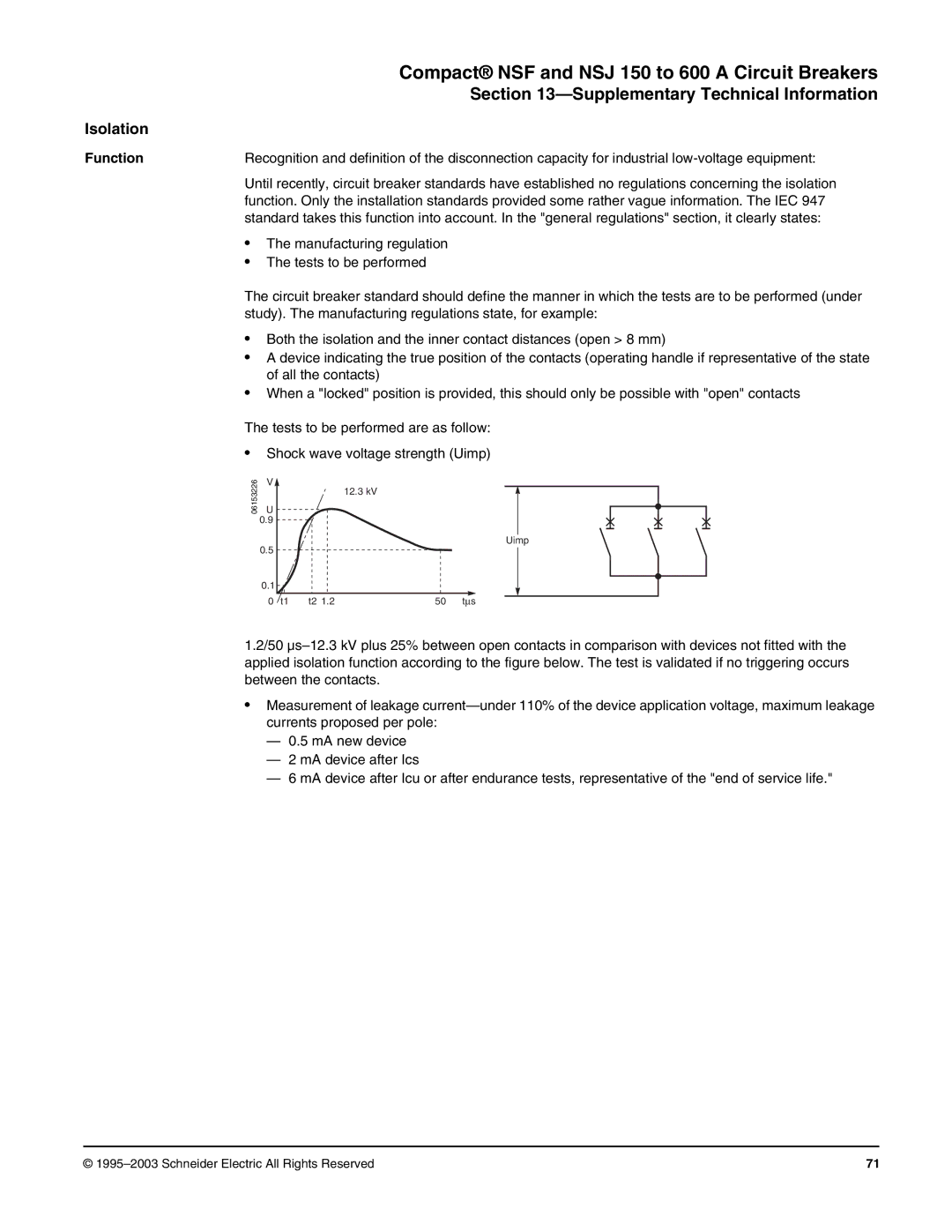
Compact® NSF and NSJ 150 to 600 A Circuit Breakers
Section
Isolation
Function | Recognition and definition of the disconnection capacity for industrial |
Until recently, circuit breaker standards have established no regulations concerning the isolation function. Only the installation standards provided some rather vague information. The IEC 947 standard takes this function into account. In the "general regulations" section, it clearly states:
•The manufacturing regulation
•The tests to be performed
The circuit breaker standard should define the manner in which the tests are to be performed (under study). The manufacturing regulations state, for example:
•Both the isolation and the inner contact distances (open > 8 mm)
•A device indicating the true position of the contacts (operating handle if representative of the state of all the contacts)
•When a "locked" position is provided, this should only be possible with "open" contacts
The tests to be performed are as follow:
•Shock wave voltage strength (Uimp)
06153226 | V |
|
| 12.3 kV |
|
U |
|
|
| ||
|
|
|
|
| |
| 0.9 |
|
|
|
|
| 0.5 |
|
|
| Uimp |
|
|
|
|
| |
| 0.1 |
|
|
|
|
| 0 | t1 | t2 1.2 | 50 | tμs |
1.2/50
•Measurement of leakage
—0.5 mA new device
—2 mA device after Ics
—6 mA device after Icu or after endurance tests, representative of the "end of service life."
© | 71 |
